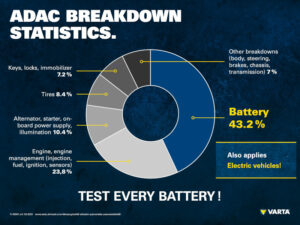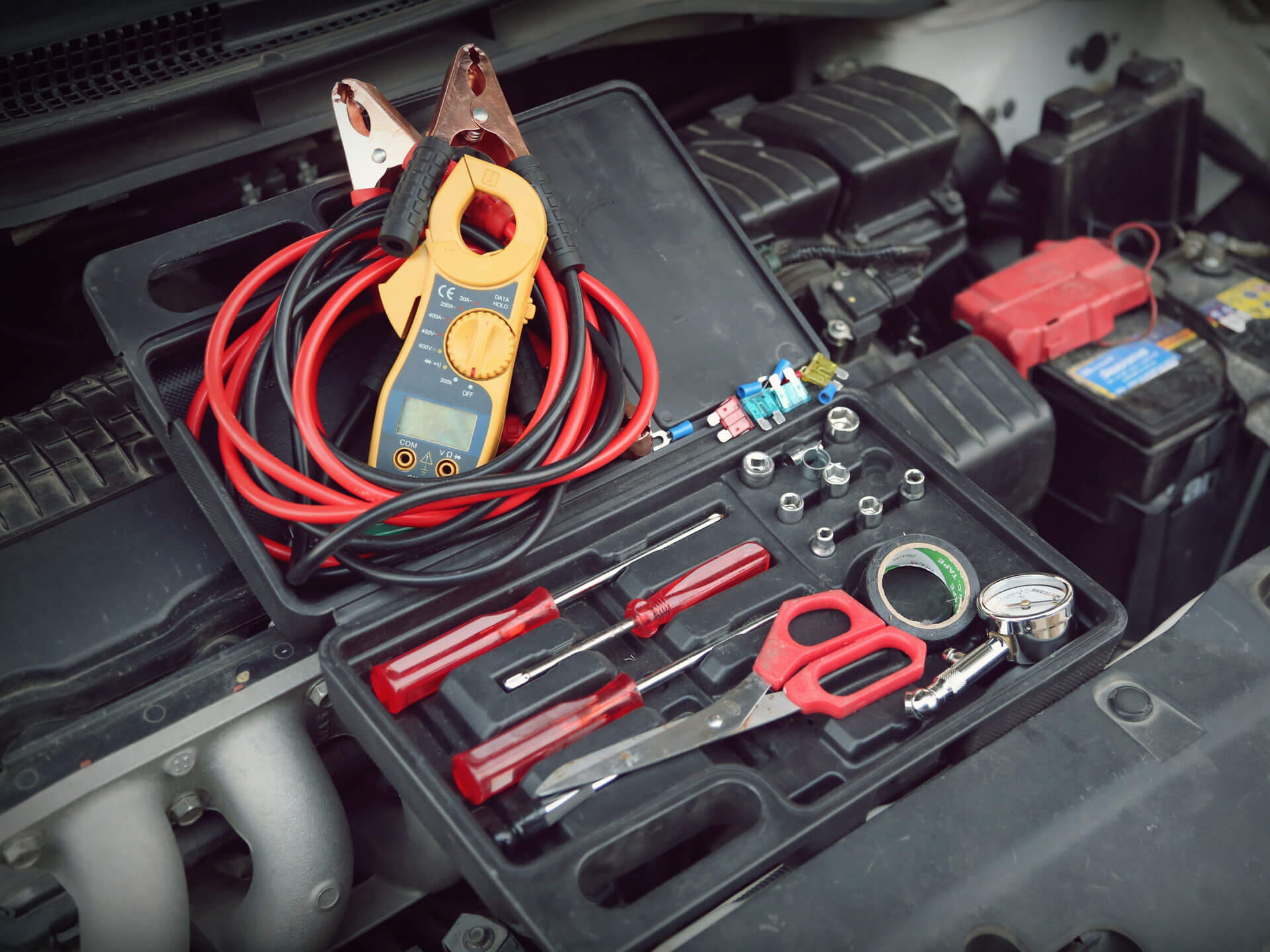Car battery testing instructions
This article contains:
According to the latest studies by the German Automobile Club ADAC, in 2022 about 46% of breakdowns were due to the battery. The reasons for this include the increased electrification of vehicles. These days, greater demands are made on the battery – up to 150 electrical consumers and the automatic start-stop system in modern cars require sufficient power. A regular battery check by a specialist workshop is therefore advisable in order to detect an imminent battery failure before a final breakdown occurs.

Correct testing of the battery state by specialist workshops
Basic principles:
Testing of a conventional wet cell battery:
A measuring device which can only measure the state of charge of the battery is suitable to test a conventional car battery. In an ideal case, an open circuit voltage of about 12.8 V is measured with a Multimeter. If the voltage falls below 12.4 V, the battery should be recharged as soon as possible. A continuous low charge damages the battery due to sulfation.
As the main load on a conventional starter battery is due to the starting process and after charging by the generator there is no further discharge, the cold start current is decisive in this case. Due to aging and wear the capacity of the battery to deliver high currents gradually decreases. In addition, the lower the charge (determined by measuring the open circuit voltage), the lower the possible current which can be deliverd during the starting process.

Testing a start-stop battery:
When testing a start-stop battery, not only the state of charge (also known as the “SOC”), but also the state of health (“SOH”) of the battery are important.
While the SOC can be simply determined with a voltage measurement, a complex test procedure is required to test the SOH, in order to make a reliable statement about the state of the battery. Among other things, the determination of the SOH takes into account the cold start capability (CCA), the residual capacity (Ah) and the charge acceptance (CA).
Just as vehicle technology has continued to develop over the years, batteries with new technologies such as AGM or EFB have also developed further. To obtain reliable test results, especially with regard to the SOH, it is essential to use modern test devices which are adapted for the new battery technologies.

Battery testing step-by-step:
(Please note the information from the manufacturer of the device.)
- Connect the battery tester to the battery terminals to determine the state of charge and the internal resistance. In principle: Connect the red cable to the positive terminal and the black cable to the negative terminal. The sequence for connection and disconnection does not matter.
To connect the testing device to a battery which is located in the trunk or the passenger compartment, the battery terminals there and not the starting aid contacts in the engine compartment must be used, as the resistance of the cable which is installed in the vehicle would affect the measurement. - To connect the testing device to a battery which is located in the trunk or the passenger compartment. Connect to the battery terminals on the battery and not the starting aid contacts in the engine compartment, as the resistance of the cable which is installed in the vehicle will affect the measurement.
- Set the battery tester to the correct battery type: Starter battery, gel battery, EFB or AGM battery. The device uses a different test algorithm for each battery type, so that an incorrect setting would produce an incorrect measurement value. In addition, for some test devices it is important to know whether the test is being made on a battery installed in the vehicle, or whether it is outside of the vehicle.
- Enter the stated cold start current for the battery into the device, including the measurement method which is used. Common standards are DIN, EN, IEC, JIS and SAE. Details of the testing standard can be found after the details of the cold start current on the battery label.
- The testing device then carries out the test automatically and provides the result.
Correct interpretation of test results? How to do it!
By the way…
To obtain correct results when measuring the conductivity, a consumer such as the headlight should be switched on shortly before the measurement. This removes any surface tension before the measurement.
Battery Testing Guide (PDF Download)

